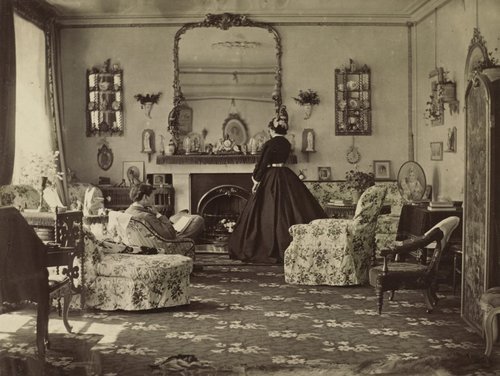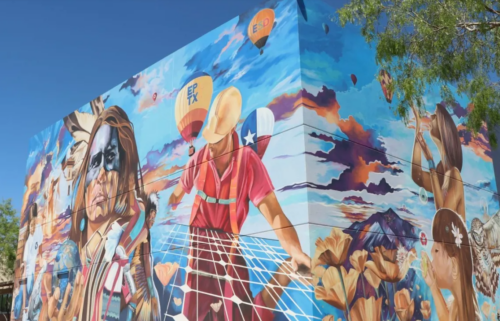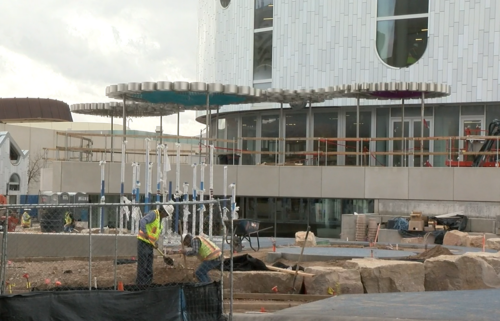How early photography changed the world

Even in its grainy, black-and-white nascence nearly 200 years ago, it was clear that photography would be a game-changing invention.
For the first time, a medium could capture people and places in real time — images that not only documented the world, but, according to a new exhibition at the National Gallery of Art in Washington, D.C., influenced public opinion and brought about societal change.
Celebrating 180 years since the first widely-used photography process, the daguerreotype, was introduced, “The Eye of the Sun: Nineteenth-Century Photographs from the National Gallery of Art” examines photography’s earliest decades. Through 140 works from the museum’s collection, it reveals how the era’s technology progressed, from the daguerreotype’s use of copper plates and mercury fumes, through to collodion negatives and albumen prints, which used egg whites to bind chemicals to paper.
“The beginning of photography in the 19th century changed the world,” explained exhibition curator, Diane Waggoner, in a phone interview. “You can draw a through-line from that to how we use photography today. You see the same impulses.”
Organized chronologically and by theme, “The Eye of the Sun” travels from 1840s work by William Henry Fox Talbot, an inventor and early photography pioneer, through to pictures taken by Kodak’s first snapshot camera in the late 1880s. Talbot “experimented with photography serving as a document, and as an artistic picture,” said Waggoner.
Other early photographers, like Platt D. Babbitt, would continue to explore the multiple functions of the medium. Referencing a series of Babbitt’s images from Niagara Falls, Waggoner said, “He would photograph (subjects) from behind, and that would be your souvenir to prove you were there.
“Today, people are holding up their iPhones, saying, ‘Hey, I was there!'” she added.
The show features work by other prominent photographers of the day, including Julia Margaret Cameron, Gustave Le Gray, Charles Marville and Lewis Carroll, better known as author of “Alice’s Adventures in Wonderland.” Their explorations with the medium span landscapes, the built environment, war, travel and art.
“The Eye of the Sun” also reflects on portraiture, both private and public — one of the most common uses of early cameras. Images on display include 1852’s “Queen Victoria and Children,” by William Edward Kilburn, in which the British monarch turned her face away from the camera, having apparently been displeased with a portrait taken days earlier. The queen “would go on to use photography to market herself, as a monarch for modern times,” Waggoner said.
Early cameras became publicly available just a few years into Victoria’s reign, and she became one of the first public figures to embrace the medium. She encouraged photographers to share her life with her subjects — and the pictures depicted not just a powerful ruler, but also a mother, wife and, eventually, a widow.
Elsewhere, there’s a range of war photography on display, with the American Civil War becoming one of the first conflicts to be documented by camera. “Some of the photos of the dead at Gettysburg and Antietam had a profound impact because it was the first time people were (witnessing) the war, and seeing how devastating it was,” Waggoner said. “We see the same impulse with photojournalism at the end of the 20th century and today.”
The exhibition also illustrates how Civil War-era imagery influenced calls to abolish slavery. A photograph called “The Scourged Back,” taken around 1863 and attributed to a duo known as McPherson & Oliver, depicts a man bearing raised scars from whippings he’d received as a slave. The image was circulated by abolitionists to show the brutal treatment of the enslaved, and to enlist support for their cause.
This “powerful but harrowing” image also needs to be considered in its historical context, said Waggoner: “It’s a witness to the horrific conditions of slavery, but it also raises issues of consent, exploitation and audience. We don’t know whether the subject — given different names in different accounts — willingly sat for the photograph or not.”
Waggoner made a conscious effort to include works by pioneering female photographers. Among then is Mary Dillwyn’s 1854 image “The Picnic Party,” which captures an intimate group of friends in a spontaneous moment. More than 150 years after it was taken, there remains something recognizable about the scene.
“Photography is both completely different in the 19th century,” Waggoner said, “and also completely familiar.”
“The Eye of the Sun: Nineteenth-Century Photographs from the National Gallery of Art” is on display at the gallery in Washington, D.C., until Dec. 1, 2019.



